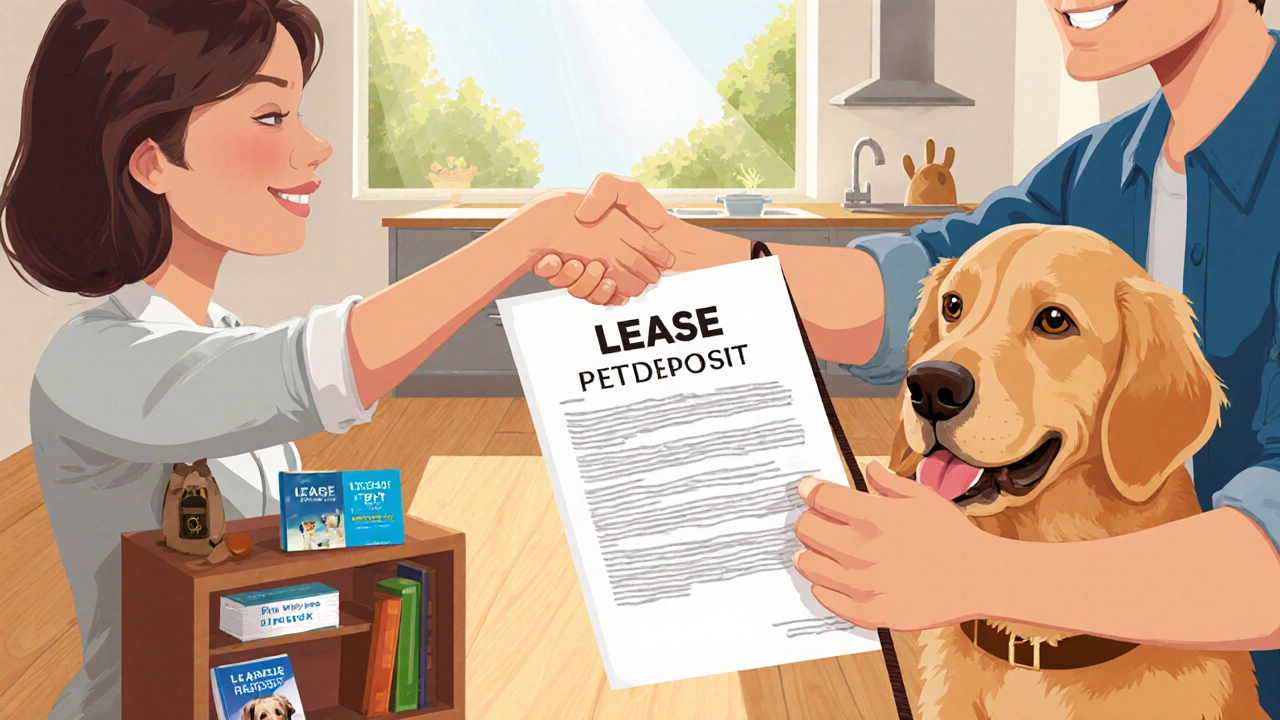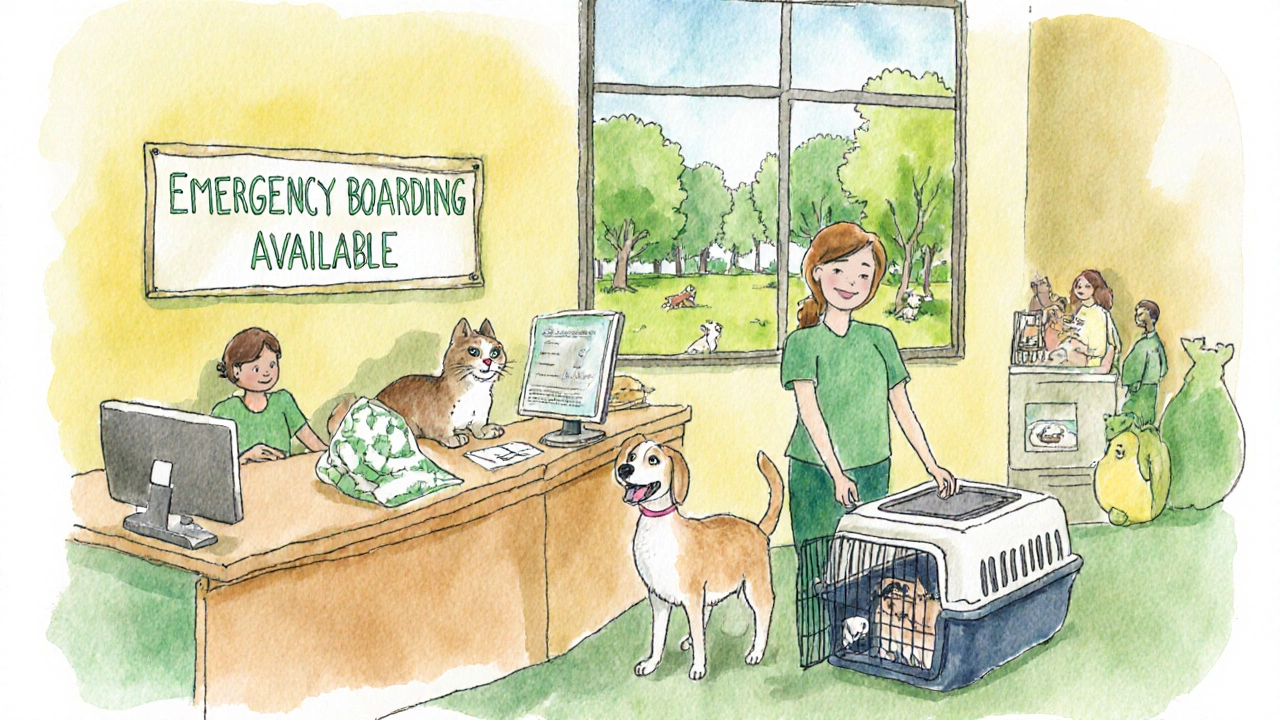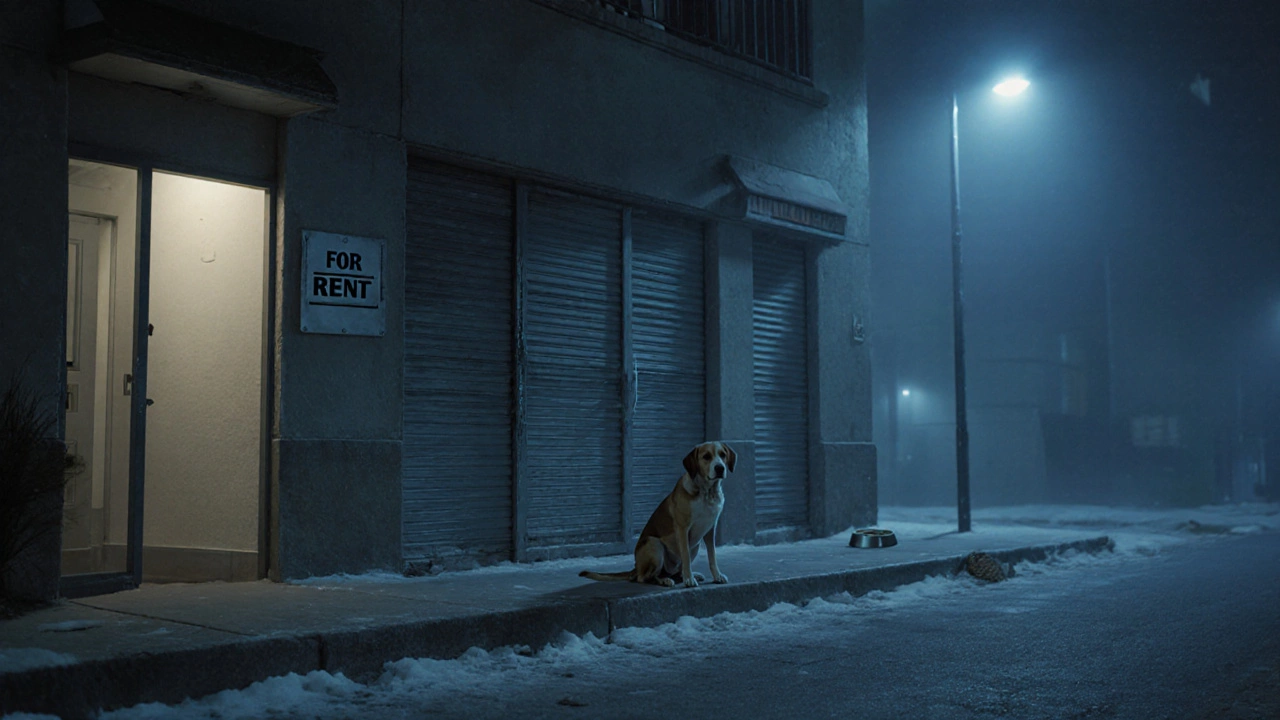Pet Rental Cost Calculator
Calculate your monthly pet care costs and see if you can afford pet-friendly housing without risking abandonment.
Pet Care Cost Calculator
Enter your estimated monthly expenses to see the total cost of keeping your pet while renting.
Your Pet Care Budget
When a pet is left behind without care, Pet abandonment is the act of intentionally leaving a domesticated animal without adequate food, shelter, or supervision. It’s a painful reality for many animal lovers, especially those navigating rental markets where pets can feel like an extra hassle.
Why pet abandonment happens in rental situations
Renters often face a set of unique pressures that can push them toward making a heartbreaking decision. Below are the most common triggers:
- Tenancy agreements that forbid pets or charge steep fees.
- Unexpected rent hikes that make it impossible to afford a pet‑friendly unit.
- Frequent moves for work, especially in cities like Auckland where housing turnover is high.
- Lack of reliable pet‑sitting or boarding options during short‑notice relocations.
- Emotional stress and time constraints that leave owners feeling they can’t provide proper care.
Legal backdrop in New Zealand
New Zealand’s NZ Animal Welfare Act (1999) defines animal cruelty, which includes deliberate abandonment. While the law focuses on protecting animals, it doesn’t compel landlords to accept pets. However, many local councils now promote pet‑friendly housing initiatives, and the Tenancy Services guide stresses that any pet‑related clause must be clear and reasonable.
Landlord responsibilities and best practices
Landlords can reduce abandonment rates by being proactive. Here’s what a responsible Landlord can do:
- Offer a dedicated Pet deposit or a refundable pet‑care bond instead of a punitive fee.
- Include a clear Rental agreement clause that outlines pet size, breed restrictions, and cleaning expectations.
- Partner with local Animal shelter or pet‑care services to provide tenants with vetted resources.
- Allow reasonable notice periods for pet owners to find new accommodations if policies change.

Tenant duties to keep pets safe
As a Tenant, you hold the primary responsibility for your animal’s well‑being. Follow these steps to stay on the safe side:
- Read the rental contract carefully before signing; watch for hidden pet clauses.
- Budget for pet‑related costs-food, veterinary care, and potential cleaning fees-in your monthly rent calculation.
- Invest in pet insurance to cover unexpected medical expenses that could strain your budget.
- Maintain a pet‑care emergency plan: identify a trusted friend, a professional pet‑sitter, or a nearby shelter you can call in a pinch.
- Document the condition of your home before moving in; it helps avoid disputes over damage caused by pets.
Preventive checklist for renters with pets
Before you lock in a lease, run through this quick checklist. It’s designed to catch hidden pitfalls that often lead to abandonment.
- Confirm the property is listed as pet‑friendly on the advertising platform.
- Ask for a written statement on any pet‑related fees, deposits, or extra rent.
- Verify that the landlord accepts the breed and size of your animal.
- Check for nearby veterinary clinics and 24‑hour pet‑care services.
- Ask if the building provides outdoor space or designated pet areas.
- Request a copy of the landlord’s pet‑damage policy and cleaning schedule.
- Set up a pet‑care fund-aim for at least one month’s rent as a safety net.
Table: Common Reasons vs. Preventive Actions
| Reason for abandonment | Preventive action for renters |
|---|---|
| Rent increase that makes pet‑friendly units unaffordable | Include pet costs in your budgeting; negotiate a fixed pet‑deposit instead of recurring pet rent. |
| Landlord imposes new pet ban after lease start | Secure a written pet clause that cannot be changed without 30‑day notice. |
| Lack of nearby boarding during a short‑notice move | Identify at least two local pet‑sitting services before signing. |
| Financial strain from unexpected vet bills | Purchase comprehensive pet insurance; maintain an emergency fund. |
| Time pressure and stress leading to neglect | Create a weekly care schedule and enlist a backup caregiver. |

Resources if you’re already in a crisis
If you’ve found yourself without a place to keep your animal, act fast. The following organizations can help:
- Animal shelter - many offer temporary foster programs for owners in transition.
- NZSPCA - provides emergency boarding and advice on legal obligations.
- Local council animal welfare officers - can mediate between tenants and landlords.
- Community pet‑swap groups - often have members willing to house‑sit for a few days.
How landlords can turn a pet‑friendly policy into a win‑win
Pet owners are a growing market segment. By offering flexible pet clauses, landlords can attract reliable tenants, reduce vacancy periods, and even charge a modest pet deposit that covers any wear and tear. Studies in Auckland show pet‑friendly buildings enjoy a 12 % lower turnover rate compared to pet‑restricted ones.
Key takeaways
Understanding the root causes of Pet abandonment helps both renters and landlords act responsibly. By planning ahead, budgeting wisely, and keeping communication open, you can keep your furry friend safe and avoid the heartbreak of abandonment.
What legally qualifies as pet abandonment in New Zealand?
Under the NZ Animal Welfare Act, abandoning a pet means leaving it without food, water, shelter, or supervision for a period that endangers its health. Intentional abandonment can lead to fines or prosecution.
Can a landlord legally ban pets in a rental property?
Yes, a landlord can include a no‑pet clause, but it must be clearly stated in the tenancy agreement. Any changes to that clause require proper notice, usually 30 days.
What is a pet deposit and how does it differ from pet rent?
A pet deposit is a refundable security amount held against potential damage. Pet rent is a recurring charge that the landlord keeps regardless of any damage.
Where can I find emergency pet‑boarding if I need to move quickly?
Contact local animal shelters, the NZSPCA, or use community pet‑sitting platforms like PetCloud. Many offer short‑notice boarding for a fee.
How can I negotiate a pet‑friendly lease without paying extra fees?
Propose a one‑time refundable pet deposit instead of monthly pet rent. Show that you have pet insurance and a solid care plan; landlords often accept responsible tenants at lower cost.
